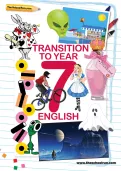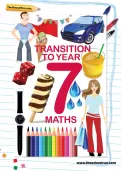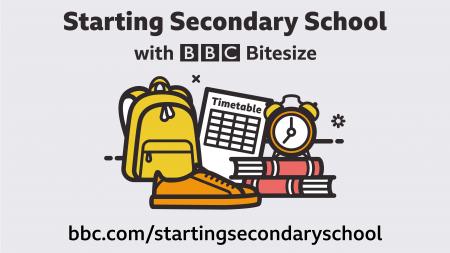Important update from TheSchoolRun
For the past 13 years, TheSchoolRun has been run by a small team of mums working from home, dedicated to providing quality educational resources to primary school parents. Unfortunately, rising supplier costs and falling revenue have made it impossible for us to continue operating, and we’ve had to make the difficult decision to close. The good news: We’ve arranged for another educational provider to take over many of our resources. These will be hosted on a new portal, where the content will be updated and expanded to support your child’s learning.
What this means for subscribers:
- Your subscription is still active, and for now, you can keep using the website as normal — just log in with your usual details to access all our articles and resources*.
- In a few months, all resources will move to the new portal. You’ll continue to have access there until your subscription ends. We’ll send you full details nearer the time.
- As a thank you for your support, we’ll also be sending you 16 primary school eBooks (worth £108.84) to download and keep.
A few changes to be aware of:
- The Learning Journey weekly email has ended, but your child’s plan will still be updated on your dashboard each Monday. Just log in to see the recommended worksheets.
- The 11+ weekly emails have now ended. We sent you all the remaining emails in the series at the end of March — please check your inbox (and spam folder) if you haven’t seen them. You can also follow the full programme here: 11+ Learning Journey.
If you have any questions, please contact us at [email protected]. Thank you for being part of our journey it’s been a privilege to support your family’s learning.
*If you need to reset your password, it will still work as usual. Please check your spam folder if the reset email doesn’t appear in your inbox.
The parents' guide to secondary school: setting and streaming

At primary school, chances are your child was taught mostly in mixed ability groups within their class. But once they start secondary school, they’re likely to be put into sets or streams according to their academic ability, at least within the core subjects (English, maths, and possibly science).
Setting and streaming: what’s the difference?
The terms ‘setting’ and ‘streaming’ are often used interchangeably, but there’s actually a significant difference between the two. Setting is where students are grouped by ability in a specific subject. So a child who’s a high achiever in English but average at maths might be put in the top set for English lessons, and the middle set for maths.
With streaming, students are assessed for their general academic ability, and put into classes accordingly. That class stays together for all subjects. For example, children might be tested at the beginning of Year 7, and the highest achieving 30 pupils put into the top stream.
‘At secondary school, children are frequently banded into broad attainment groups, and then setted within those bands for particular subjects,’ explains Sue Hallam, professor of education and music psychology at the UCL Institute of Education. ‘Contrary to popular belief, all secondary schools adopt some form of ability grouping, although the extent of it for each year group may vary.’
Setting is usually limited to English, maths and possibly science, especially in KS3. Students are more likely to be put into sets for maths than for English, probably because it’s easier for English to be taught in mixed ability groups: for example, the whole class can study the same text, but with students producing work of different depth and quality depending on their ability.


Instantly download Year 6 to 7 transition packs
- English & Maths transition packs
- Practise journalistic writing, figurative language, persuasive text and more
- Revise key maths methods and concepts
How are children put into sets or streams?
There are various different ways of setting or streaming children at secondary school. These include:
The 11+ test There are a handful of ‘bilateral’ schools across England, where the majority of places are non-selective, but a certain number are reserved for children who pass the 11+. These pupils are put into a separate ‘grammar stream’ and taught as a higher ability class.
Year 6 SATs Some schools use the results of students’ KS2 SATs to put them into sets or streams in Year 7.
Year 7 CATs Many schools assess students in the first term of Year 7 using cognitive abilities tests, or CATs. Rather than being a test of knowledge, CATs assess pupils’ ability and potential in skills like verbal and non-verbal reasoning, quantitative reasoning (numbers) and spatial ability. Children are then set or streamed based on their results.
Other tests Some schools devise their own tests to work out which set or stream pupils should be in.
The benefits of setting and streaming
Research has shown that high-achieving children benefit most from setting and streaming. Teachers have higher expectations of children in top sets or streams, and push them more than those in middle or bottom groups. As a result, these pupils tend to get better exam results, and are more likely to continue their education into the sixth form and beyond.
Supporters of setting and streaming argue that it also benefits lower-achieving students, although there’s less evidence to prove this. They say that one of the benefits is that class sizes can be differentiated according to ability: so a top set may have 30 pupils, as they’re more able to work independently, while a bottom set may have just 15, so the teacher can give them more one-to-one attention.
Students may benefit from being able to motivate each other, as they’re all at a similar ability level, and can move at the same pace. This may lead to them growing in confidence and self-esteem. In a top set, pupils are able to push ahead without worrying about being labelled ‘geeky’ or ‘square,’ while in lower sets, they can contribute to the class without the fear of getting things wrong and being made to feel inferior by brighter students.
Setting and streaming can also be beneficial for teachers, as they’re able to tailor classwork and homework more closely to the class’s ability, rather than having to provide ‘one size fits all’ teaching.
The disadvantages of setting and streaming
While research has shown that children in top sets or streams benefit from being taught by ability, it’s not as positive for those in middle or lower groups. These students tend to make no more progress than those taught in mixed ability classes, and can in fact make less progress than they should.
‘The evidence suggests that teachers’ expectations for lower groups are often too low,’ explains Sue. This means students aren’t challenged enough, and their attainment tends to decline compared to those in higher sets or streams.
Pupils in lower sets can also feel stigmatised by their position, which can become a self-fulfilling prophecy. They feel they’re in the ‘dunces’ class’, which can knock their self-esteem and confidence, and make them less likely to put in the effort to raise their attainment as it seems pointless.
Setting and streaming can be inflexible. ‘Once in a group, it’s extremely difficult to move out of it,’ Sue says. Students are labelled by teachers as belonging to a particular group, which makes them less likely to consider a move. ‘In addition, if teachers wish to move a child up a group, another has to move down,’ Sue adds.
Another problem is that factors other than attainment and ability come into play when students are set or streamed. Boys, students from poorer homes, ethnic minorities and summer-born children are all more likely to end up in lower groups.
Worried about setting and streaming?
As a parent, it’s natural to worry about what set or stream your child will end up in at secondary school. It’s worth finding out what methods they use to group; if, for example, they use SATs results, helping your child prepare to the best of their ability could help them achieve a higher mark that ultimately means they’re put in a top set or stream. CATs can’t be prepared for, but you can still help your child do their best by making sure they read widely, know their times tables inside out, and get plenty of sleep and a decent breakfast on test days.
Otherwise, the best policy is to wait and see what happens. If a parent complains about their child’s group, they’re often moved up, but don’t be too hasty to demand a move; being in a lower set may sound like a disadvantage, but they may benefit from more one-to-one attention and a slower pace of learning, whereas in a higher set they’d be left behind. If you’re genuinely concerned, speak to your child’s form tutor or head of year about your concerns.
BBC Bitesize has a range of starting secondary school resources offering support and information about all aspects of secondary school life for parents and children.









